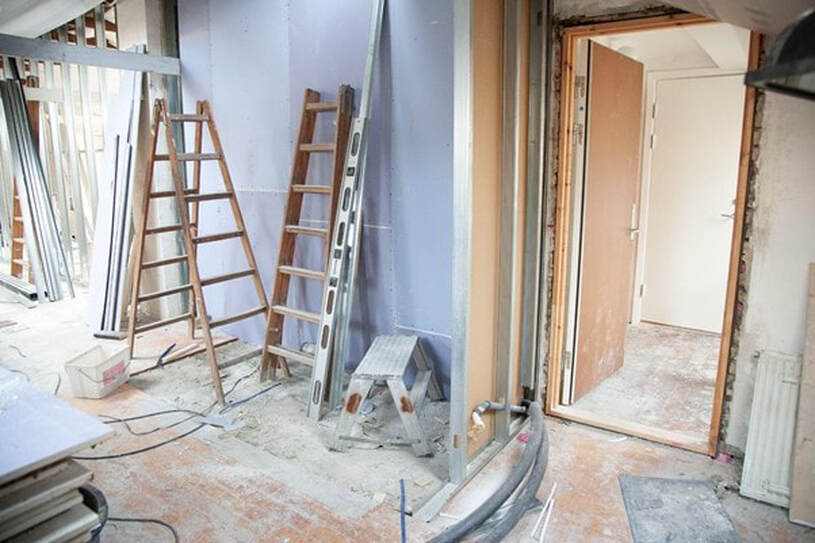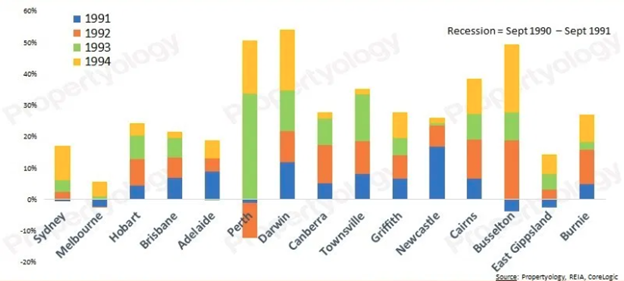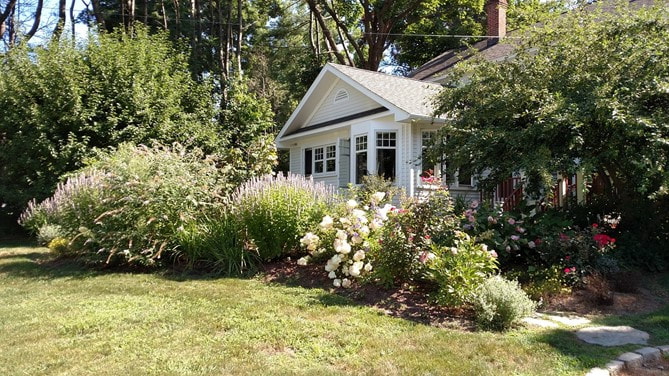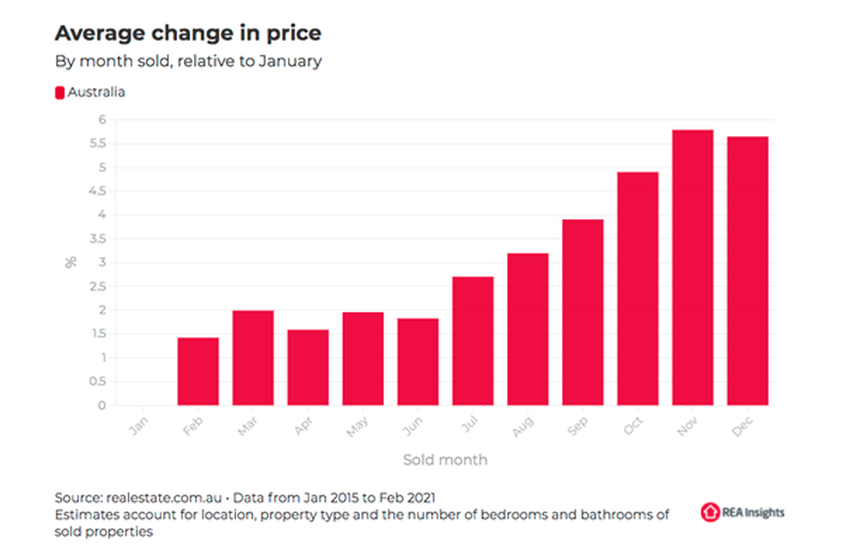|
The vast majority of people who look to purchase property will do so with the help of finance.
If you need to use finance to purchase a property, then you certainly need to include a ‘subject to finance’ clause in your offer. A subject to finance clause is a condition that is attached to the offer which effectively means the transaction will go ahead if the buyer is able to get finance for the purchase of the property. There are also other common conditions that most buyers will use on the purchase of a property, including being subject to a building and pest inspection or subject to a satisfactory valuation. These are all measures that are put in place to protect the buyer to some degree, most of which are considered standard and aren’t likely to impact the strength of your offer. How Does a Subject to Finance Clause Work? It’s always a good idea to speak to a mortgage broker well in advance of putting an offer in on a property. In reality, it is best that you have also taken this one step further and received a pre-approval from a lender. This not only gives you the confidence that you are going to be able to get finance on a purchase, but it will also give you a very clear indication of how much you can actually spend - including all acquisition costs. A pre-approval can also make your offer stronger in the eyes of the selling agent who is ultimately paid when the transaction goes through. It is also important to understand that a pre-approval isn’t a loan. You still need to make an offer subject to finance and will also need to receive a satisfactory bank valuation - which is why these two conditions go hand-in-hand. Each state has slightly different procedures in place around the offer and acceptance process, with some that are heavily focused on using auctions over private treaty sales. While some states also have cooling off periods. If you put in an offer that is subject to finance and you are running out of time to secure your finance, you will need to get your solicitor to inform the sales agent in writing to get an extension. If you don’t, you could potentially lose your deposit. Finance is arguably the most important part of the property buying process because without it you can’t move forward. Being organised and getting pre-approved will put you in the strongest position to acquire the property you want and to make sure the transaction goes through without a hitch. Even if you don’t have any loans or debts, having a credit card might be enough to significantly reduce your borrowing capacity.
The reason why a credit card can be a hindrance to your ability to borrow money, is that lenders assess your credit card on the overall limit, not on how much you currently have in credit card debt. Even if you’ve never reached your credit card limit since you’ve had the credit card, many lenders will assess a credit card as if it is maxed out. For example, if you have a credit card with a limit of $10,000, the lender is likely to assess your debt based on around 3% of this total amount per month. This monthly amount, which in this case would be $300, is added to your ongoing expenses, with the result that your overall borrowing capacity is reduced. With a credit card limit of $10,000, that could mean a $75,000 reduction in borrowing capacity, which is significant and can quickly limit the number of potential properties a first home buyer has access to. Assessing Your Situation Lenders do not only focus on what your credit card limit will do to your borrowing capacity. They also take other factors into consideration! One of the most important elements of any debt, in the eyes of a lender, is your track record of making repayments. If you continually miss payments and increase your debt levels, that doesn’t bode well in the eyes of a bank. Similarly, if you are living off your credit card, and are one pay cheque away from not just missing a payment, but also missing your rent, then that doesn’t make you look overly appealing in their eyes. It is important to understand that, with the implementation of Comprehensive Credit Reporting (CCR), lenders have incredibly detailed data on your spending habits, drilling down to how early or late you pay off your debts, or other bills. Credit Cards Are Not All Bad Now that we understand the impact credit cards have, it’s also important to note, that having a credit card is not necessarily a bad thing in the eyes of a bank. As mentioned, how you manage your credit cards is far more important than the fact that you have them. Lenders like to see that you are responsible with money. In fact, if you have a credit card and manage the credit very well, you will be looked upon far more favourably than someone who doesn’t have a credit card at all. Whether or not you get rid of your credit cards to help you get a home loan really comes down to a few key factors.
If you’re reliant on your credit cards, take a step back and assess your personal financial and living situation and get that in order before you start the home loan application process. House prices across Australia are continuing to see a sharp rise, and that can make it very tricky for buyers. Clearly, most states are in the grip of a seller’s market, so it’s important to both adjust your expectations and know how to buy when prices are rising.
Have finance organised Arguably, the most important element of buying a property during any market is to make sure you have your finance organised. However, when markets are rising, you not only need to know how much you can spend, but you need the confidence to be able to act quickly. As prices move higher, we also see the time it takes to sell a property, fall dramatically. As a buyer, if you have a preapproval in place, you’ll be able to make an offer early and have the confidence that your finance won’t be an issue. Look at all options Most Australian’s like to browse the real estate portals and then attend open homes on the weekend. Unfortunately, when markets are hot, you need more options, or you’ll be stuck fighting over the few properties that are actually listed for sale. One of the most effective things you can do is get on the email list of the leading agents in the suburb or suburbs in which you are wanting to buy. Sales agents often let people know about upcoming listings, and if you are confident and prepared, you might be able to make an offer before the listing ever sees the light of day. Do your research When markets are moving, it seems as if every property is selling well above its asking price. It is incumbent upon you, the buyer, to understand where the market is at in your area of interest, and the best way to do that is to track recent sales. By understanding what’s selling, you will know what a fair price is and also how long you have to act. Talk to all the sales agents in your area if you want even more insight as they are the ones who are always on the pulse of the market. Manage your expectations When markets are moving, it's unlikely that you’re going to get a significant discount on a property that has multiple interested parties. If a market is rising by 5% each quarter, it's conceivable that from the time you began your search to when you go to put in an offer, some property might have appreciated sharply in value. Again, you will need to know your market and put in an offer that is competitive. There’s no point fighting over a few thousand dollars and missing out when houses are rising by double digits on an annual basis. While it’s nice to be selling when markets are strong, this can also cause a number of issues for those who are needing to sell their home before trying to buy another.
We would see this commonly with upgraders and downgraders, who might be at the time in their lives when they need more space for the family or, on the flip side, would like a smaller home that requires less maintenance as they get older. Both sets of potential buyers will likely need to sell their own property before making an offer on another one. This can be a tricky situation to navigate, and it’s important to consider a number of factors when trying to sell. Appraise Your Current Home The first thing you need to get a clear understanding of, is just how much your current home is worth. In a seller’s market, prices can move quickly, so even in the space of three months, your property might have gained significant value. It’s always good to get multiple opinions from the leading sales agents in your area as they are on the pulse of what is selling. They can also give you a very clear idea of how fast your home might sell and also whether the property type is what buyers in that area are looking for. Look to Auction There’s no doubt that if you want to get the most you can for your property, auction is the best option in a hot market. Auctions are most effective when there are multiple interested parties who are prepared to bid against one another. However, if you need more flexibility around the terms, such as settlement, then it might be worth considering selling by private treaty. That could come at the cost of extracting the very best price. Longer Settlements If you need time to buy a home after selling, then it’s well worth pushing for a longer settlement period on your own property. It’s possible to get four-month settlement periods, and you will likely need that time to go through the buying process. Bridging Loans If you are looking to sell, but really want to buy a certain property, there are options to consider, such as a bridging loan. These loans often come with higher interest rates but can be a useful way to get the best of both worlds. Given that the property market is strong, the odds of selling your home go up; you just don’t have that certainty when you have already sold your property. Pre-approval What you can do is start talking to a mortgage broker about what your finance options are like, and in some cases, it will be possible to get a pre-approval together. A pre-approval in conjunction with a good appraisal of your current property will give you a clear idea of how much you can afford to spend in the future. Even if you’re starting out the selling process, it is well worth getting a good understanding of how much you can potentially spend and start monitoring the market. See your home loan options in less than 5 minutes Summer is a great time of year to do a few jobs around the house. It’s also a good time to start planning ways to build some equity in your home with a simple renovation. Here are some strategies that can quickly build equity with a small renovation or even just a touch-up.
Landscaping The first thing a new buyer looks at when they enter a property is the exterior and the gardens. Tidying up the garden and outdoor areas and making them into beautiful places that a family could enjoy is a great way to build appeal. Convert the Laundry These days, there’s less need for an entire room to be dedicated to a laundry. So, the space is perfectly set up to be converted into another bathroom or even an ensuite. Adding an additional bathroom can really increase the appeal of a property and give it a modern touch. Remove Internal Walls If there is the opportunity to remove an internal wall to open up the living area, this can really make a big difference. This is the type of renovation that might only cost a few thousand dollars, depending on the nature of the wall that is being removed, but could have a big impact on its value, as it can modernise an older style property. Remember that every property is a little different and it’s not always possible to do this. Clean the Roof A very quick and easy way to make the exterior of your home more appealing is to wash the roof with a high-pressure cleaner. This method can turn an older roof into one that looks fresh and modern. Cleaning the roof is an especially good option if you’re looking to sell the property. Kitchen/Bathroom These are the classic two updates that have a huge impact on the state of a property. Potential renters will likely pay a premium for a new bathroom and kitchen, while the property will also be a lot easier to sell if both are modernised. Even the simplest kitchen renovation takes time and planning. You will need to make sure you have the budget in place to get the result you want. Painting & Window Coverings When it comes to value for money, you can’t go past a fresh coat of paint and new window coverings. While it will likely cost you a few thousand dollars to have a property painted by a professional, this is one job that you can take on yourself. New window coverings are also a great way to make your home look a lot more modern. If you’re looking to sell, you should consider investing in both. See your home loan options in less than 5 minutes One of the key differences between buying at auction or buying using a private treaty is that a sale at auction is unconditional. That means, as a buyer, you’re not able to add conditions such as subject to finance or subject to a building and pest inspection. Therefore, you need to be prepared and organised when the time comes to make a bid at auction.
Here are some things you should do to best prepare when a house you want goes under the hammer. Know the True Value When a property is selling at auction, it’s important to have a realistic understanding of what that property is likely going to sell for. Typically, properties will sell for a similar price to comparable houses that have recently sold in the same area. The best way to identify comparable sales is to look at property sales in the same suburb, with a similar property type and land component as the real estate you’re looking to buy. Understand Auction Day Most people only buy a few properties over the course of their life. That means if you’re buying a home at auction, it’s likely you’re not going to be very experienced at the process. It’s a good idea to attend a number of auctions in advance so you can get an idea of how the process works and to help you feel more relaxed on the day. Organise Your Finances It’s vital that you have your finances in order before any property purchase, but it’s even more important when you are buying at auction, given the sale is unconditional. The easiest way to do this is to speak to a mortgage broker and start the loan preapproval process. The most important part of preapproval is that it should give you confidence you can likely get a home loan when you bid at auction. However, it will also give you clarity around exactly how much you can pay for a property. Understand the Conditions If you are to bid at auction day, you will need to register with the sales agent and make yourself familiar with the conditions of sale. It’s vital that you review the conditions of sale as it will outline when and how much deposit is to be paid. If you’re unsure about anything, consider getting the documents reviewed by a professional. If you want any inspections done, such as building and pest, it’s up to you to take care of that prior to auction day. See your home loan options in less than 5 minutes The majority of Australian homeowners can be classified into a few different categories. There are first home buyers, upgraders, downsizers or investors.
The data on homeownership in Australia would suggest that the vast majority of Australians fit into just one of these categories. Less than 10 per cent of the population owns an investment property, which means that for the most part, Australians work their way up the real estate ladder by following the tried and true process of upgrading until retirement. However, there is a section of the population who doesn’t continually upgrade their properties by selling their previous homes. These people effectively turn their ‘principle place of residence’ (PPOR) into an investment property. So, is this something you should consider when the time comes to move into a bigger and better home? Finances First and foremost, the decision as to whether to sell or hold your former PPOR will be based predominately around your finances. The first consideration will be whether you have the income to service the debt on two homes, one of which being an investment property. It’s important to note that many lenders will assess only 70 per cent of any rental income, making it a little tricky at times. Similarly, you might need to sell your previous home to use some of the equity as a deposit on your next bigger and better family home. Assuming you have the means to hold onto the property, there are some important things to look at and consider. Opportunity Cost Just because you can hold onto your former home as an investment, doesn’t mean you should. You will need to carefully assess what the outlook for your house is; both as a rental property and in terms of potential capital growth. If your property is in an area that has seen strong price growth recently, then perhaps in the short-term that area might not be as likely to see significant price appreciation. Similarly, if you own a property that is not fitting in with what buyers are looking for, then the demand, both as a rental and for future growth, might be limited. When assessing your former PPOR, you need to weigh up the pros and cons of keeping it versus the opportunity of investing in different areas. Other suburbs or even states might be at different phases of their growth cycles, and also might be offering higher rental yields, which would make it easier to service any debt. Therefore, it is vital that you weigh up the opportunity cost of holding. Benefits of Holding By far most of the benefits of holding onto your former PPOR as an investment, come down to the savings you will be able to achieve, in terms of both taxes and transaction costs. When you buy and sell property, there are significant costs involved. You will incur selling agent fees, marketing costs and other expenses such as auctioneer fees and settlement costs. One of the other big benefits of holding onto a property that was previously your PPOR, is that you are able to enjoy the capital gains tax exemptions for a period of time. In Australia, the ATO has what’s known as the six-year-rule, which allows your former PPOR to be exempt from capital gains tax for a period of six years. After this period of time, your property will be treated as a normal investment property and the sale will be seen as a capital gain for tax purposes. This can be a significant cost and something you need to consider. Of course, if you don’t sell the property, then you won’t need to pay any tax. Whether you want to sell, hold or build a large investment portfolio, it all comes down to your own personal goals. There is no right answer, but the first step should always be speaking to a mortgage broker to understand your borrowing capacity and identifying what you are looking to achieve. See your home loan options in less than 5 minutes Investing in property in Australia has proven to be a sound long-term investment, with prices growing steadily for many decades. However, when the time comes to choose exactly where you should be buying a property, there are a myriad of things for you to think about. One of the very first questions you’re going to need to consider is whether to buy in a capital city or a regional area. While there is no correct answer, there are advantages and disadvantages to both. Investing in a Capital City For the most part, capital cities grow in value at a faster rate than their regional counterparts. Cities like Sydney and Melbourne have traditionally been locations that have seen heavy levels of migration, both from overseas and interstate. With limited supply, in the form of land, prices have been trending higher for a long time, and the growth rates are very strong. Your blue-chip areas of most capital cities normally see steady growth while also being less prone to falling during times of broader market weakness. On the flip side, because these prices are higher, rental yields are a lot lower. While we are in a low interest rate environment at the moment, historically blue-chip areas will be negatively geared investments. Another advantage of properties located in the city is that there is normally a steady stream of tenants available. That means properties will be easy to rent out and you can usually find high-quality tenants. Investing in a Regional Area One of the main reasons people choose to invest in regional areas is the fact that rental yields are often far higher. It’s not unusual to find rental yields of 5-6% in regional areas, which, in the current environment, normally means your investment will be positively geared and putting cash in your pocket each month. The other side of this equation is that the growth is normally not as high as the blue-chip areas of our major cities. However, when you have a strong yield, it’s a lot easier to hold onto your investment property. The other clear benefit to investing regionally is that the price of the properties is normally far lower. If you have limited borrowing capacity, you might not have the option of investing in a major city to begin with. In many regional areas, you can buy properties under $300,000 which makes them affordable to new investors. City vs Regional While there is no best place to invest, as everyone has their own goals and circumstances, it is possible to get the best of both worlds. There are cities in Australia that do have very high yields, and there are also regional areas that have a track record of strong capital growth. Many property investors look for a combination of these factors as it allows them to grow their equity while also being able to service their loans and continue to borrow. See your home loan options in less than 5 minutes Over the past few years, it’s become more common for parents to help their children purchase a property. As property prices have risen sharply, particularly in places like Sydney and Melbourne, entry into the property market is not as easy as it was a generation ago.
More and more parents are helping their children get a foot into the market, given that prices continue to rise each year. Here are some ways parents can help their children get that first property. A Guarantor Loan A guarantor loan is a way that a close family member (normally parents) can help provide a deposit for a home loan. Generally speaking, lenders like to see that a borrower is able to come up with a 20% deposit on the property they wish to purchase. This shows the lender, that they are a borrower that can manage money, while it also gives the lender some security in the event the borrower is unable to meet their repayments and they have to step in. A guarantor loan works by having a parent put up equity in their own property (normally the family home) as a deposit. This means the borrower can potentially get a loan and avoid things like Lenders Mortgage Insurance (LMI). There are some considerations with this type of strategy. Significantly, the parent’s property is at risk in the event the children can’t meet the repayments. A guarantor loan also means you are effectively borrowing nearly 100% of the property’s value. The ability to get a loan is still dependent on the borrower’s ability to service the loan, based on their current income and expenditure. A Gift In many instances, parents will simply give their children a sum of money to use as a down payment on their first property. The main issue with this is a lender will likely still want to see that a borrower has some kind of genuine savings. Genuine savings is really just money a borrower has saved up over a period of time. Ideally, this would be the 20% deposit that they had been working towards saving. Lenders will typically want to see that these funds have been sitting in a bank account for some period of time. The policy with genuine savings and gifts varies between lenders and it’s always advisable to speak with a mortgage broker about your personal situation. Property co-ownership While not as common, it is possible for parents and children to own a property together. Before entering into this type of arrangement it’s advisable to speak to an accountant who can direct you on the correct tax structure to use. This is due to the capital gains implications that might not be present with just a single property owner or a couple. Another consideration with property co-ownership is how the arrangement works on a practical level. Who pays what and when? If the children are living in the property, are they going to be paying rent to the parents and how much? These are things that you will need to outline, even before you begin searching for a suitable property. The other consideration will be how do you actually finance the property? If both the parents and children have regular incomes to service any debts, then it might not be an issue. However, if one party does not have a regular income – for example, if the parents are retired or the children are students – then this might impact their ability to borrow. See your home loan options in less than 5 minutes Buying a home is typically the most expensive purchase you’re ever going to make. The thing that makes property a powerful investment is that you can borrow a large portion of that cost from a bank. However, there are still a number of other costs that homebuyers need to be aware of before they start their search for a property, as those costs could impact what they can afford. LMI While banks are prepared to lend a large portion of the value of a property, they still like to see that a borrower is able to contribute 20%. That deposit shows them that the borrower is capable of managing money effectively, and it also protects them in the event they do default. It is possible to borrow more than 80% of the value of the property; however, you will likely be required to pay lenders mortgage insurance (LMI). LMI is a one-off upfront premium that is put in place to protect the lender. The cost itself varies, depending on how much you are looking to borrow, the LVR and even the location of the property. This can be a sizeable amount and needs to be factored in prior to starting your property search if you have only a small deposit. Valuation/Loan Costs To have your loan application formally approved, one of the conditions is usually that the property undergoes an adequate bank valuation. This gives the lender an indication that you have paid a fair price for the property. There are different types of valuations a lender will require in terms of how the property is valued. However, as the borrower, you will need to pay those costs. These fees are also on top of any loan establishment or application fees. Insurance When you are approved for a loan and ultimately settle on the property, you need to immediately start thinking about looking after that property. The first thing you will need to do is to make sure you have the right types of insurance in place. The most important is normally home and building insurance as this will cover the structure itself. If you are buying a freestanding home, this will be your responsibility. If you’re buying into a strata complex, this might be recovered in the strata fees. On top of this, you can also consider contents insurance or rental insurance if the property is for investment purposes. Property Management If you’re buying an investment property, it is easy to forget about the upfront costs associated with property management. A property manager can be a valuable resource in helping you take care of your asset while also making your life a lot easier. However, you will need to pay them for various services. Property managers charge their fees based on a percentage of the rental income, usually somewhere between 5 - 10%. There are several other upfront costs as well, such as the letting fee, which is normally two weeks’ rent, the cost of getting professional photos done, and various other admin costs. You should expect to receive no rental income for around two months after taking into consideration the upfront fees and the monthly payment cycle most property managers use. See your home loan options in less than 5 minutes We all want to get a bargain when we buy a property, however, the reality is that you need to meet the vendor halfway in most cases. Knowing how much you should offer and exactly where you need to meet the vendor when it comes to price comes down to asking a few key questions. What’s the basis for the asking price? Just because a house is listed at a certain price by the sales agent doesn’t mean the price is a realistic one. The key to understanding whether a price is fair and reasonable is to do your market research beforehand. These days it’s easy to access sales data on the real estate portals and you can quickly and easily see what other comparable properties have been selling for in the same area. Try and find a house of similar age, land component and condition that has sold in the last three to six months, and present those to the agent when making an offer. Are there multiple offers? If you’re the only one putting an offer in on a property, then there is a fair chance you’ll be able to negotiate a lower price. If there are multiple parties interested then the odds of you getting a bargain are slim. At the end of the day, buying and selling is about supply and demand and if you need to compete for a property, then you likely won’t be able to put in a low ball offer successfully. How long has the property been listed? If a property has been sitting on realeaste.com.au for six months with no interest then there is a fair chance the property is overpriced. At that point, the vendor might be willing to accept something less then they had previously hoped for and meet the market’s expectation. If they aren’t then it’s likely that they are simply asking too much and are not prepared to budge. What’s the vendor’s motivation? How eager is the vendor to get a deal done? If they need to sell the property quickly for family or financial reasons, then you might be able to put in a lower offer with good terms. If the vendor has a set price in mind and no reason to sell, then there is not much chance of getting a low offer through. Has the asking price changed? If the asking price is slowly dropping each week or month, then it’s fair to say that the property was initially priced too high, either by the agent or the vendor. This also shows the vendor does want to sell and that they are prepared to be flexible on what they accept. In this case, a low offer might be something that the vendor is prepared to consider. See your home loan options in less than 5 minutes Arguably, the most important element of the property journey is obtaining finance. One of the most confusing parts of the process for first home buyers is the difference between the various types of approvals. Most commonly, when you are looking to obtain finance to purchase a home, there will be two separate approvals that you’re likely to encounter, and it is vital that you understand the differences between them. Conditional Approval If you choose to purchase a home using a ‘subject to finance’, without some form of indication from a lender that you will be able to access that finance, you could find yourself in a tricky situation. Commonly, homebuyers will look to gain conditional approval for a loan, which is more commonly known as a pre-approval. A pre-approval is a powerful tool for the homebuyer, as it gives them a very clear indication from a lender as to what they will be able to borrow, based on their personal and financial situation. Once you have submitted your loan documents and all the required documentation, such as payslips, group certificates and/or bank statements, the credit team will assess your application and if you are successful, you will be issued with a conditional loan approval. What this means is that a bank will pre-approve your home loan, up to a certain borrowing limit, subject to you finding a property that meets the agreed criteria, and provided that your situation doesn’t change in the coming months. Generally, a pre-approval is valid for three months, but it is merely an indication, and not a guarantee that you will get a loan. A pre-approval is a powerful tool for you as a buyer, because it makes you appear serious in the eyes of vendors and sales agents, whilst also giving clarity as to just how much you are able to spend on a property. Unconditional Approval Once a homebuyer has found a property, they can go back to the lender that offered a pre-approval and seek a home loan. When a lender is satisfied that you have met all of their criteria, including LVRs, valuations and your own personal financial situation, you will be fully approved and you will have unconditional approval. It is possible that a lender won’t offer you a home loan after you have made an offer on a property, if that property is unique in some way, or if there are issues with it in the eyes of the lender. The most important part of the loan application process is to work closely with a mortgage broker. They are in the best position to be able to help you navigate any issues that might arise, and they also communicate closely with the lender. If you’re unsure about where your application is at any given time, your mortgage broker will be able to help guide you through the process. See your home loan options in less than 5 minutes When property markets are hot, vendors often choose to go to auction to try and attract the very best price they can. However, many vendors are open to accepting an offer prior to the start of the auction itself. That includes the days and weeks beforehand, not just on the day. Do Your Homework Most homes for sale by auction don’t have a specific price. If anything, the selling agents will likely offer a loose ‘price guide’, which, in many cases, is at the lower end of the spectrum. They do this to encourage as many people as possible to attend the auction and bid, in the hopes it will drive up the price. As a buyer, you need to know how much a property is worth, and that’s even more important when making a pre-auction offer. Use comparable sales from the surrounding area in the last 3-6 months. Ideally, you will find recent sales history for a similar property type, age, and also land component. When making a pre-auction offer, you can point to the sales data to help in your negotiation. Avoid a Dutch Auction If you’re hoping to swoop in early with a strong offer, you don’t want to get yourself into a situation where you are bidding against someone else. This is often termed a ‘Dutch auction’, and it is not all that different to buying a property at auction. All a sales agent really needs are two interested buyers, and that can be enough to push the price well above what it should be selling for, based on comparable sales alone. Know Your Limit If you’re going to be confident making a strong offer, it’s vital that you’re pre-approved for finance so you know exactly where you stand. If your borrowing capacity is limited, this can actually be a good thing in the negotiating process as you can simply state that fact to the sales agent and even prove it to them. It’s hard to make a strong offer, including appealing terms, if you don’t know for sure that a bank will lend you the money. Walk Away The worst thing you can do is get into a situation where you are continually upping your offer. In effect, you are just bidding against yourself. If it’s a matter of a few thousand dollars and the sales agent is clear that is what the vendor needs to make a transaction happen, then that might be the time to work with them. However, if you know your finance limit and also what you believe a property is worth based on comparable sales, then you should stick with that number. See your home loan options in less than 5 minutes Property investing has been a powerful way to build wealth that Australian’s have been using for generations.
The great thing about property is that there are a number of different approaches you can use that all increase your wealth over time. The exact strategy that you use as an investor will be dependent on your own personal situation, but here are 4 powerful strategies you can use to add value to your property or build a portfolio. Renovate The great thing about investing in property is that, as the owner, you have the ability to add value to your investment. Compare that to the share market and there isn’t much you can do to increase a company’s share price. By doing a renovation, you are able to add value to the property and at the same time, increase the rental yield and overall appeal to potential buyers. The trick to a renovation is to do your research before you start. You want to look at other properties in the same suburb that have similar characteristics. Ideally, you want to see a large difference in price between renovated and unrenovated homes in that suburb. That way, there’s room to make a profit after taking into consideration all the costs involved. Cash Flow With interest rates at record low levels and mortgage rates incredibly affordable, the vast majority of properties in the current environment will be at least neutrally geared. The idea of finding a positive cash flow property is that the income you receive from rent is more than the costs of owning the property. That includes mortgage and interest payments and all costs such as maintenance, repairs, and management fees. A positively geared property puts money in your pocket each month and allows you to build a larger property portfolio than one that is negatively geared. However, just because a property has a high yield and is potentially a positive cash flow property, doesn’t mean it’s a good investment. You still need to buy a property that has the potential for capital growth over time. Getting a Good Deal When a vendor sells a property, they are doing it for their own reasons. Depending on how motivated that vendor is to sell, will tell you how much they are willing to negotiate. Generally speaking, a highly motivated seller, will be far more willing to accept a lower price in return for a quick settlement. A motivated seller is often someone who needs to sell for personal or financial reasons and if you can identify these types of properties, you may be more likely to get yourself a great deal and also create instant equity in the process. Capital Growth Arguably the key objective of most Australian property investors is to look for capital growth potential. Australian property has a long history of appreciating in value and that is expected to continue over the long term. However, the property market is not one big market, but rather thousands of smaller markets made up of tens of thousands of suburbs. If you can identify areas where demand will outstrip supply, then you’ll likely see above-average capital growth as well. These types of areas are often located in highly sought-after owner-occupier areas that have great amenity, access to rivers and beaches and good school zones. Alternatively, they can be areas that are being rezoned and going through gentrification. There’s no one right strategy for property investors, and a more powerful way to create wealth is to try and combine as many of the elements mentioned as you can into your next property purchase. See your home loan options in less than 5 minutes There’s been a lot of talk recently, about the prospect of Australia and many other countries around the world falling into a recession. These days, the word ‘recession’ isn’t as scary as it used to be as most people understand that this is a technical definition, that just means two consecutive periods of negative economic growth. With the severe limitations placed on the economy, through lockdown measures, used to combat the spread of COVID-19, it’s no surprise that the economy might slow down. But as we’ve also seen, things are improving rapidly and business is getting back to normal relatively quickly. That said, it is interesting to look at just how resilient Australian property has been in the past and why we should be optimistic about what that means for the coming months and years. ‘The Recession We Had to Have’ The last time Australia fell into a recession, it was the residential property market that really did buck the trend. The ‘recession we had to have’ happened in the early 1990s after a period of strong growth in the ‘roaring ’80s’ and the ensuing property boom. At the time, growth fell by 1.7 per cent and the unemployment rate jumped to 10.1 per cent. While the numbers looked bad on the surface, they didn’t impact property prices like many thought it might. In fact, it was quite the opposite. In the 12 months after the recession began, property prices in Sydney fell by only 0.7 per cent, Melbourne by 2.4 per cent and Perth by 1 per cent. On the flip side, house prices grew in value in Brisbane by 6.8 per cent and Hobart by 4.2 per cent. Not exactly what many might have expected. In the three years after 1991, property prices showed cumulative growth of more than 20 per cent in 5 of Australia’s 8 major capital cities. Source: Propertyology During that same period of time, unemployment was sitting around 10 per cent, with some areas even higher than that.
As we can see, property prices grew significantly in Perth and Darwin between 1991 and 1994, while our major two cities of Melbourne and Sydney both saw growth of between 5 and 18 per cent. Again, a long way from the calls being made recently of 30 per cent falls. Interestingly, there were also a number of regional areas that performed very strongly through that period as well. House prices in Townsville grew by over 30 per cent, Griffith by around 25 per cent, Cairns by nearly 40 per cent and Busselton in Western Australia by around 50 per cent. This data really highlights the fact that not only does Australian property have a history of performing strongly during tough times, but there really isn’t just one single house market in Australia. The most recent data from CoreLogic has indicated that the combined capital cities fell in value by just 0.5 per cent in May, which they labelled a sign of just how ‘resilient’ the property market has been. As lockdown measures across the country ease and the real estate industry gets back to business, the chances of a ‘V-Shaped’ recovery continue to increase. And once again it looks like property could play an important role in Australia’s economic recovery. See your home loan options in less than 5 minutes Buying a home is quite often the largest financial decision most people make, and it’s one that needs to be carefully considered.
Prior to going down the path of purchasing a home, it’s vital that you get your finances in order to ensure that firstly, you can get the required finance, and secondly, you will be able to manage the repayments going forward. There are a few things you can do with your personal finances to give yourself the best chance of getting into your dream home. Start Saving Being able to manage money is an important life skill, and unfortunately, it is not one that everyone has. When it comes to purchasing a home, there are a number of benefits to having an effective savings plan. The first is that lenders require you to come up with a 20% deposit. While there are other options at your disposal that can help here, generally speaking, borrowers requiring an LVR (Loan-to-Value Ratio) greater than 80% will be required to pay Lenders Mortgage Insurance (LMI), which can be expensive. It’s also worth remembering that on top of your deposit, you could be required to pay stamp duty (unless exempt) and certainly settlement costs, amongst other expenses. Getting into the habit of putting money aside every week and working within a budget and towards a goal will also hold you in good stead when the time comes to start making repayments. Another important consideration is that lenders require you to have a certain amount of money in genuine savings. The ability to show them not only your savings but a track record of managing your money well makes you stand out as a person they will want to lend to. Improve Your Credit One of the key factors lenders look at is a borrower’s credit score. A credit score is effectively your track record of managing debt. Get into the habit of paying off bills when you receive them and always pay down your credit cards each month. Practices like this will help boost your credit score, and lenders will certainly take note. Pay Off Debt If you’re looking to take out finance for a new home, one of the things that a lender will certainly want to know about is any outstanding debts. Your payments on these debts will be a factor in calculating your ability to service any future loans. On top of this, lenders also assess your debt-to-income ratio, and many of the major banks have fixed metrics that they must adhere to. Paying off debts is typically a good idea, regardless. However, when you’re looking to take on more debt, it’s important that you don’t have things like overdue credit cards and personal loans with high interest rates weighing you down. Get Pre-Approved The best way to know just how you are looking financially, in the eyes of a lender, is to get a pre-approval. By talking to a mortgage broker and starting the process of getting pre-approved, you will get a very clear understanding of where you currently stand. If there are any issues with your credit history or outstanding debts, your mortgage broker will be able to sort them out; or at least start the process of turning things around. See your home loan options in less than 5 minutes When Christmas is coming up it’s important to start thinking about your budget over the holiday period.
While we all love giving presents, if you’re looking at potentially applying for a home loan in the new year, it’s important that you don’t do any damage to your chances of getting finance by overspending in the next few weeks. What we do know, is that lenders take a snapshot of your financial situation when they assess your application for finance and if you’ve been busy racking up credit card debt, it might come back to hurt you in the future. Here are some quick tips for budgeting at Christmas. Allocate Money Upfront There’s a good chance that you will be spending this Christmas, so do it wisely. Make a budget and try and stick to it. Lenders will look at your bank and credit card statements from at least a three month period, so if you’re looking to have a clean record for your loan application, it might be worth keeping the charges down. One idea could be withdrawing cash and paying for things with physical money, that way you can allocate funds upfront. Another budgeting idea is to simply spend a fixed amount per person. That way you can allocate a pool of money and everyone gets a fair deal. One of the big traps that a lot of people fall into is minimising the spending at Christmas, only to get sucked into all the Boxing Day and holiday sales. When you’re allocating your Christmas budget, it might be worth applying that to the entire holiday period. Don’t overextend yourself While any credit card debt isn’t great, the worst thing you can do is take on more credit cards. When it comes to borrowing money, your current debt is just as important as how high your credit limits are. If things are a bit tight on your loan application, it might even be worth getting rid of your credit cards to boost your borrowing capacity. This is tough to do if you have outstanding balances and it’s even more difficult if you can’t pay them off. Invariably, if people have the money (or credit) at their disposal, they tend to spend it. Keep both the credit card spending down and certainly don’t take out any new cards in the coming months. Even if there are some great sales on. Avoid Buy Now, Pay Later These days, everyone is moving toward the buy now, pay later (BNPL) phenomenon. While it might be convenient, you don’t want these types of payments to impact your chances of securing a loan. While BNPL isn’t technically an application for finance, it could impact your credit score. More importantly, a lender will make an assessment on what type of borrower you are and if you have hundreds of these types of payments coming out of your account, it won’t look that good on the application. These days, every lender will assess your credit score and go over your bank details with a fine-tooth comb, so it is important to have things in order. Christmas is an incredible time of year and it’s great to give to family and loved ones. Just don’t overdo it or it could cost you a lot more in the long run, when the time comes to get a loan approved. See your home loan options in less than 5 minutes At the moment potential vendors are likely talking to real estate agents about the best way to sell their current property. Particularly in New South Wales and Victoria, it’s very common to sell your property through the auction process.
There are several benefits for vendors choosing to sell by auction. Manufacturing Competition If you’re hoping to sell your property for more than it might be worth, the only way you can do that is by having multiple bidders trying to buy it. If you have two or more interested parties, you have a chance that the sales price will keep being pushed higher. If you’re selling by private treaty with only one interested party, that’s unlikely to occur. One of the main advantages of going to auction is that it naturally manufacturers a certain level of competition between would-be buyers. These buyers are forced to compete for a property on auction day, and this often leads to a very good result for the vendor, particularly if your property is in a sought-after location. The Emotional Element If you’re selling a property and the likely buyer is an owner-occupier, the auction process can heighten the emotional aspect of the purchase. When buyers form an emotional attachment to a property, this can then lead to higher sales price for a property on auction day. Generally speaking, most people don’t buy many homes over the course of their lifetime and being required to buy through auction is daunting for many potential buyers. Unconditional Sale When selling your home by private treaty, you are negotiating with a buyer on both the sale price and the terms. When buying a home at auction, the terms of the sale are normally laid out in advance, including how long you have until settlement. Generally, when the hammer falls, the sale is unconditional, which means there are no sunset clauses or opportunities for a buyer to back out. This puts the seller in the driver’s seat and means they can lay out how they want the sales process to unfold. A Quicker Sale The auction process usually takes place over a number of weeks leading up to the auction day itself. Having this hard end date in place often leads to a faster sale. Purchasers know the property is going to be sold and are thus required to be organised and act quickly if they are interested in buying the property. Private treaty sales can become drawn-out processes with a lot of negotiation, and if there is only one interested buyer, this has the potential to continue for many months. You Can Still Sell Beforehand Even if you choose to sell through the auction process, that doesn’t mean you can’t accept an offer prior to auction day. If you have a keen buyer who is putting up a strong offer and it’s one that you’re happy with, you are still able to accept it. Knowing that the property is going to sell at auction can often motivate buyers to approach the vendor with attractive terms, in hopes of persuading the vendor to sell to them direct. See your home loan options in less than 5 minutes In the current environment, with auctions seeing reduced activity, there is once again more focus on private treaty sales. A key part of the sales process when using a private treaty is the offer and acceptance process. Understanding what makes a strong offer is not only important, it could potentially help you achieve a positive outcome. When making an offer on a property, it’s important to understand the implications of what that offer might look like to the vendor. Here are five things to consider before making an offer. Understand a Property’s ValueWhen a real estate agent lists a property for sale at a given price, they are generally going to be using comparable sales data to get a better picture of what that property might be worth. They will be looking at properties of similar size, age and land component and trying to determine how much demand that type of product is receiving in the current market. The first step to putting in a strong offer is to know the market, as well as the sales agent. You need to monitor recent sales and see how fast properties are selling and at what price. Vendor MotivationAfter examining what’s been selling in the vicinity of your property of interest, you need to then focus on why the vendor is selling. While this information might not always be made available to a potential buyer, speaking with the agent is usually the best way to get a better understanding of the vendor’s position. As a general rule, a vendor that needs to sell quickly for personal reasons could potentially be willing to accept a lower price to make that happen. Consider Your Conditions of SaleOne of the big differences between buying at auction or via private treaty is the buyer is often able to include a range of conditions. Conditions are generally things like ‘subject to building and pest inspection’ or a ‘subject to finance’ clause. From the vendors perspective, the fewer conditions you attach to the offer, the more appealing it is. However, a vendor is far more likely to accept an offer with multiple conditions attached if the price is what they want. Always Put an Offer in WritingAn offer is always going to be far more effective if it is in writing. In fact, a vendor has no obligation to even consider a verbal offer. As a buyer, you could potentially even start negotiating against yourself if you don’t have an offer written down. Having Finance Pre-Approved is VitalThese days a ‘subject to finance’ clause is virtually never going to be a deal-breaker for a vendor. Most people buying or selling a home understand the role finance plays when large sums of money are involved. As a buyer, you can have your finance organised well in advance by way of a pre-approval. A pre-approval is something that you can use to show the sales agent you’re a serious buyer, which could help get the deal done. Likewise, a pre-approval will give the vendor more confidence in your offer. This could be important if it is a hotly contested property with multiple offers. The good news is, a pre-approval is something you can talk to your mortgage broker about well in advance. It will help you get a better understanding of what you will be able to borrow and therefore how much to spend. If you’re constrained by your borrowing capacity, this could also be a good negotiating tactic. See your home loan options in less than 5 minutes With property markets looking very strong, many potential sellers are looking at ways to spruce up their homes. One of the best ways to entice buyers and make an immediate impact on the value of the property is to increase the curb side appeal of your home.
Here are 4 ways to quickly improve your property’s exterior. Outdoor Dining/Living As the seller, it’s in your best interest to help buyers see the potential of your home. Most people like to dine and spend time outside. If you have an attractive outdoor area or garden, adding a table and chairs is a simple way to show people how they can use that space. Do the creative work for them. Tidy up the Garden If you have a potential family home or even an inviting outside area, cleaning up the garden can make a huge difference. Pruning back trees and mowing the lawn is a great start and really adds to the immediate appeal of an outside area. On top of this, take a quick trip to your local garden centre and grab some simple and cost-effective things - like pebbles - to use in areas that are a bit bare. Similarly, adding some pots of succulents can do a lot to make things look more aesthetic. Paint the Doors One of the most cost-effective ways to boost appeal straight away, is with a coat of paint, and the front door is a part of the home that often gets overlooked. A wooden door and even wooden window frames are ideal to paint; this gives the entrance a fresh and tidy feel when you first walk through the door. Clean the Roof A relatively cheap way to make an older house look newer is to clean the roof. While in some cases your roof can be painted, it’s time-consuming and expensive. A far better option, especially if you have a tiled roof, is to hire someone to clean it. Most professionals use high-pressure water to spray it down. This can make an ageing roof look new again, which will only add to the overall appeal of your property. See your home loan options in less than 5 minutes In the current market where property prices are trending higher and there’s a shortage of stock, upgraders and downgraders can find it difficult to get into a new property. For many, the age-old question of whether to buy first or sell first is more prominent than ever with the present housing market favouring sellers.
Fortunately, there is an option that can help in the form of a bridging loan. A bridging loan is a short-term loan that helps buyers purchase a property before needing to sell their current property. In a perfect world, you would sell your property and then go out and find a new property. However, if the perfect home comes along beforehand, you might not want to miss out on the opportunity. That said, there are advantages and disadvantages to bridging loans. Advantages Speed The main benefit of a bridging loan is that you can buy a property right away. You don’t have to wait for the property to sell or even to settle, which can be a long time in some instances. It will also give you room to sell your property, so you aren’t forced to sell immediately at a worse price than you might have received otherwise. Capitalised Interest When you take out a bridging loan, it is normally an interest-only loan, where you pay back all the interest at the end when you sell your original property. With this type of loan, you’re only needing to pay back one mortgage at a time and can pay off all the accrued interest when you sell and settle on your current property. Standard Rates In years gone by, bridging loans weren’t as appealing as they often came with very high interest rates. These days many lenders will offer standard variable rates, but as always, policies differ between lenders and products. Disadvantages More Interest When you are taking on a bridging loan you are technically carrying two properties and therefore will be paying interest on both. The longer it takes to sell your current property the more interest you will be required to pay. Some lenders might even force you to pay higher interest rates after a set period of time. Higher Costs There are certain areas where you will need to pay additional costs when using a bridging loan. For example, given that you have two properties, you will need to pay for two valuations. There can also be costs involved with breaking your current loan to take on a bridging loan. Need To Service the Debt To qualify for a bridging loan, you still need to be able to service the total amount of debt based on your income and expenses. In some ways, this is similar to getting an investment loan. You will also need to have a reasonable amount of equity built up in your current home. See your home loan options in less than 5 minutes One of the biggest mistakes new property buyers make is not understanding how much a property is actually worth. This is common with inexperienced buyers who have trouble purchasing a property at auction.
The auction process is not always easy to navigate, which is why it’s important to find out how you can quickly and easily get a better understanding of what a property’s true value actually is. Ask An Agent Sales agents are at the coalface of the property market. They are normally very approachable people who are prepared to take the time to discuss property in their local area. If you’re interested in purchasing a certain property, it’s possible to contact a number of local agents and get their opinion on what it might be worth. Agents know what types of property are currently in high demand, as well as what has recently sold and for how much. They can be a very valuable tool in getting a clear understanding of what your property (or one you want to purchase) might be worth. Online Tools These days there are a host of free online tools that can value a property. It’s simply a matter of entering the address and the algorithm will give you a quick idea of what a property is likely to be worth based on recent sales history. While this is not a perfect valuation, it should give you some idea of what a property is worth because it does factor in what has been selling in the local area. Hire A Valuer If you want a very accurate idea of a property’s true value, you can hire a professional valuer. Many buyers choose to do this as a lender will require a valuation before approving a home loan. While a lender may not accept your independent valuation, it will give you an accurate idea of what a property is worth and if you can afford it. Comparable Sales The vast majority of valuers in Australia price a property based on comparable sales. Comparable sales are simply sales of similar properties that have occurred in the past few months. The good thing these days is that much of the sales data is available for free online, and you can use those figures independently to come up with a rough valuation. The most effective way to do this is to go to a listing portal that provides recent sales data and find all the properties in the same suburb that have occurred in the past three to six months. From there, you can narrow that list down to properties that match yours in terms of the dwelling type, age, condition, and land component. At this point you can see the sales of properties very similar to your own. This will give you a good idea of what the property might be worth. If there is a property that has sold that is very similar to your property of interest, you can take this one step further and contact the sales agent to get an idea of how the property sold. Ask them how many people viewed the property and how many offers were made. If the property sold at auction, see if you can get any insight into the number of bidders and how it went. The more information you have the better, as this will help you make the most informed decision about your own property, or one that you’re looking at buying. See your home loan options in less than 5 minutes Owning your own property is normally very high up on the list of things people want to achieve in their life. However, depending on your financial goals and what stage of life you’re at, what you hope to achieve with property will likely differ quite considerably.
For first home buyers, the biggest question is usually whether to rent or buy? Advantages of Buying Capital Gains The most obvious advantage of buying a property is that you own it and benefit from the capital gain on the property, should its value increase. However, you also have to pay all the costs such as council and water rates and ongoing maintenance. You Control It When you own a property, you get to do anything you want to it. A common complaint from renters is that they aren’t even allowed to put up a picture hook. That’s not an issue if you buy a house. Add Value If you own a property, you’re able to add value to it and manufacture equity in certain ways. The most common strategy for this is to do a small renovation or even a subdivision. More Affordable In a lot of cases, you will find it is more cost effective to buy than rent, in the current environment, thanks to record-low interest rates. If you’re living in an area where you can pay less on your mortgage than you would renting, then the incentive is certainly there to go out and buy. Advantages of Renting Flexibility One of the greatest benefits renters enjoy is flexibility. Many people who choose to rent do so because they are able to rent in highly desirable locations, like the inner city that offers a great lifestyle and amenity. For many of these high-demand locations, purchasing a property can be very expensive and outside the budget. Lower Fixed Costs Costs are usually less of a burden for renters as the landlord is generally required to pay many of the ongoing costs of the property, including strata fees, water and council rates, and maintenance. Cash Flow Renting can allow you to free up more cash, so you can put it into other ventures. If you’re trying to start a business or you want to spend your money on things like travel, then renting can be advantageous. Rentvesting Over the past few years, there has been a growing push from property investors in Australia to continue renting and purchasing an investment property instead of a home to live in. This is a way you can get the best of both worlds – you can live in a great location and still invest in property elsewhere. Rentvesting is increasingly common in places like Sydney and Melbourne, where house prices are higher. See your home loan options in less than 5 minutes While we all have different goals when it comes to property investment, for those out there that want to continue to grow their portfolio there are a number of important considerations to take into account. Many homeowners unwittingly become investors when they look to upgrade their first home and decide to keep the original property. However, if you are looking to build a property portfolio quickly, you will need to consider many other factors.
Capital Growth The most common way investors continue to expand their property portfolios is by accessing the equity in their homes to use as a deposit on future investments. This is only possible if the initial property grows in value. Capital growth ultimately comes down to supply and demand. If a property has steady demand, then over time the value of that property will increase. We see this a lot with inner-city locations that are well-located and have plenty of amenities. The first step to finding great locations to invest in is to look beyond your own backyard. Most new investors like to invest in an area they are familiar and comfortable with. However, this might not be the best way to grow your property portfolio. Cash Flow While capital growth is what ultimately increases your property portfolio’s value and lets you expand your portfolio, it’s cash flow that will help you service the debt. If you invest in a property that has a low yield where the rental income is less than the cost to service the debt, then you have a negatively geared property. This type of property is typically found in larger cities and well-located areas. While these properties make great investments if you want to expand your property portfolio, down the track a negatively geared property will weigh on your ability to service future loans. A positively geared property is one in which the rental income is greater than the cost of holding the property. These types of properties are found in outer suburbs and regional locations. While not as well-located, the higher yields help to boost your cash flow, making it easier to grow your portfolio. Adding Value Arguably the most powerful thing about property is that you have the ability to increase the value of your investment. If you were to invest in shares, for example, there is really nothing you can do to boost their value, leaving you at the mercy of the market. With property, there are a number of strategies you can use to add significant value to an asset. The most obvious way to do that is through a cosmetic renovation. A renovation adds value to a property, and also has the benefit of making it more appealing to tenants, which can boost rental yield. Houses on larger blocks of land might also be candidates for subdivision or development. It’s possible to subdivide a portion of a property and sell off an unused area of land. You could even build a new home on that piece of land. The benefit of this strategy is that you can very quickly manufacture value and you don’t have to wait for either capital growth or rental income. See your home loan options in less than 5 minutes With the spring selling season coming to an end and Christmas just around the corner, many buyers and sellers are getting ready for a well-deserved break. The traditional belief is that spring is the best time to sell and it’s for that reason we see the largest volume of transactions taking place throughout September, October and November. This is followed by a sharp drop in transactions over the summer months. Interestingly, if you’re a buyer, then summer could well be an opportunity for you to find a great property at a decent price. In fact, research from realestate.com.au suggests that if you’re a buyer, January might be the month that represents the best buying opportunities. Source: realestate.com.au
This data found that across the country, properties sold in November have attracted prices almost 6% higher than those in January. According to the numbers, January has been the cheapest month to buy a property over the past three years. However, there are some big differences in the various capital cities, with the biggest seasonal impact being felt in Sydney, Melbourne and Hobart. Across these three capital cities, houses sold for prices in December that were 10% higher than in January. The belief is that in spring there are more auctions taking place, which leads to higher prices in Sydney and Melbourne in particular, which feature the majority of auctions. The fact that January can attract lower prices also has to do with the fact that many properties that might not have sold in December were held over until January. The impact of the time you buy and sell is a lot less prominent in other capital cities, but it still does occur in both Brisbane and Adelaide. In Perth, it appears that the best time to buy is during the winter months. As we move into the new year, the question remains, will this trend continue? 2021 hasn’t been a normal year by any standard, however, transaction volumes are getting higher each week as many people who have been holding off on buying or selling finally start to get active. See your home loan options in less than 5 minutes |
EDITOrCategories
All
Archives
December 2023
|
|
Read about us on KochiesBusinessBuilders and Linkedin
Partner with Adobi Mortgage Solutions Contact Bruce Johnstone (03) 9996 8553 or email [email protected] |
©2021 ADOBI® MORTGAGE SOLUTIONS ABN 94465268443
Suite 405, 585 Little Collins Street, Melbourne, VIC 3000 Telephone: (03) 9996 8551 Credit Representative Number 536529 authorised under Australian Credit Licence 384324 Your complete financial situation will need to be assessed before acceptance of any proposal or product Please review our Lenders, Terms of Use and Privacy Policy Member 87449: AFCA - Australian Financial Complaints Authority Member M-351557: FBAA - Finance Brokers Association of Australia |

























 RSS Feed
RSS Feed


